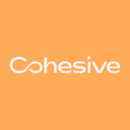0b: Strategic definition (strategic brief)
| |
|
|
|
|
|
|
|
|
|
|
|
The second part of the 'strategic definition' stage (or 'strategy' stage in PAS 1192:2) involves preparing a strategic brief and an initial responsibility matrix so that advisers can be appointed to carry out feasibility studies and option appraisals.
Having established that the project merits further investigation, the employer should appoint an internal team.
On large projects this may involve creating a project board, establishing user panels and appointing champions responsible for specific aspects of the project. This should include a 'soft landings champion' to ensure the design optimises operational performance and there is a smooth transition from construction to occupation.
One of the key roles that should be allocated at this stage is an employer side information manager, who will take responsibility for the progressive definition of the employer's information requirements and will go on to oversee the exchange of information from suppliers and the internal team during the course of the project. If the employer is not experienced at adopting BIM processes they may benefit from the appointment of an external BIM adviser to advise them how to define the employer's information requirements.
Prepare a strategic brief
The employer's internal team develop the information in the statement of need and preliminary business case into a strategic brief that describes in more detail the requirements the built asset will have to satisfy. The strategic brief should be as detailed as possible and should provide sufficient information to enable the appointment of advisers. Key stakeholders should be involved in preparing the strategic brief, including, where possible, the operators of the completed development.
The strategic brief should make reference to level 2 BIM. The approach to procuring the new asset will include obligations on suppliers to provide accurate, reliable, up-to-date information throughout the course of the project. The strategic brief should state that as well as procuring the design and build of the physical asset the employer will also procure a developing project information model (PIM) from suppliers, that is, a progressively more detailed collection of linked models, documents and data, representing a virtual replica of the real built asset. Eventually, at hand over, the project information model will represent as-built information about every aspect of the built asset and will contain sufficient information to support maintenance once the asset is operational.
Where the likely location for the proposed development is known, the strategic brief may include existing information such as building surveys, site surveys, information about ground conditions, the location and capacity of utilities and so on. Where there is an existing estate there may also be information about building services, standard components or products, building management system requirements, schedules of existing accommodation and so on. There may also be lessons learned reports from previous projects and there may even be an existing building information model.
Wherever possible, information in the strategic brief should be provided in a format that will be easy to use and interrogate during the development of the project and in the operation of the completed built asset, for example, spreadsheets scheduling existing accommodation, 3D laser surveys and so on. This is important because specialist formats, some native file formats and even PDF’s may not be genuinely usable by an employer, that is, it may not be possible for the employer to fully interrogate or modify the information they contain.
Prepare an initial responsibility matrix
The employer should consider team responsibilities and identify appointments that will be necessary during the course of the project, as well as defining the outline scope of services for those appointments.
The employer might begin to record this in a responsibility matrix (or project roles table) setting out broad responsibilities for information production aligned to the project stages. As it develops, the responsibility matrix might also identify limits of authority, reporting structures and any gaps in resources.
The table below sets out examples of plain language questions that an employer might ask at this decision point and the information they might require to answer those questions.
| Plain language questions | Information required |
|
Has all required existing information been compiled in a suitable format and stored in a suitable way? Does the strategic brief properly reflect the business need? Has the strategic brief been developed sufficiently to appoint advisers to carry out feasibility studies and option appraisals? Has an assessment been made of the appointments required to carry out feasibility studies and option appraisals? Should appointments be made to carry out feasibility studies and option appraisal? |
Strategic brief, including existing information. Initial responsibility matrix. |
next stage >> 1a: Preparation and brief (appraisals).
--Cohesive
BIM Directory
[edit] Building Information Modelling (BIM)
[edit] Information Requirements
Employer's Information Requirements (EIR)
Organisational Information Requirements (OIR)
Asset Information Requirements (AIR)
[edit] Information Models
Project Information Model (PIM)
[edit] Collaborative Practices
Industry Foundation Classes (IFC)






